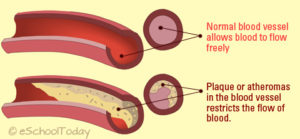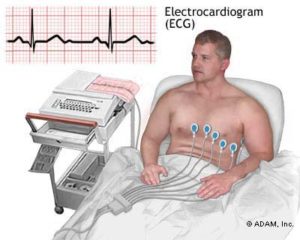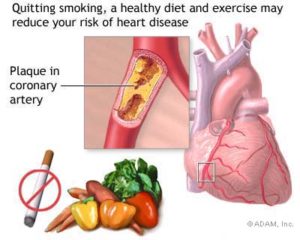Heart Disease
Health Education
Source: https://www.mountelizabeth.com.sg/facilities-services/centre-excellence/heart/conditions
What is coronary artery disease?
Coronary artery disease, also called coronary heart disease, or simply, heart disease, affects hundreds of thousands of Filipino. This serious condition is a result of plaque buildup in your arteries leading to restriction of blood flow to your heart and starvation for oxygen. The plaque could rupture, leading to a heart attack or sudden cardiac death. Each year, 170,000 Filipinos die from cardiovascular diseases, up from 85,000 more than 20 years ago, according to a 2009 study by the Department of Health. That’s a mortality rate way more than those caused by typhoons that hit the country every year. Yet, like a thief in the night, cardiovascular disease quietly sneaks into our homes and hospital beds, snuffing the life out of 19 Filipinos each hour These are the deaths that do not make headlines, but diseases of the heart and the vascular system have remained the top two causes of death in the country since 1993.

Source: http://eschooltoday.com/heart-disease-basics/what-is-atherosclerosis-and-arteriosclerosis.html
How does coronary artery disease develop?
From a young age, plaque can start to go into your blood vessel walls. As you get older, the plaque builds up. That inflames the walls and raises the risk of blood clots and heart attacks. The plaque makes the inner walls of your blood vessels sticky. Then, other things, like inflammatory cells, lipoproteins, and calcium, travel in your bloodstream and mix with the plaque. As more of these inflammatory cells join in, along with cholesterol, the plaque increases, both pushing the artery walls outward and growing inward. That makes the vessels narrower. Eventually, a narrowed coronary artery may develop new blood vessels that go around the blockage to get blood to the heart. However, if you’re pushing yourself or stressed, the new arteries may not be able to bring enough oxygen-rich blood to the heart muscle.In some cases, when plaque ruptures, a blood clot may block blood supply to the heart muscle. This causes a heart attack. Studies have found that taking low-dose aspirin each day may help prevent heart attacks and strokes in people who are 50 or older and at risk for heart disease. There are nonmodifiable and modifiable factors that contribute to CAD. Nonmodifiable includes aging. Your risk for CAD increases as you age. For males, CAD is developed between 40 and 45 years old; for females, it’s between 50 and 55 years old. When females reach menopause, their chances of developing CAD will equal that of the male. However, the modern lifestyle of women is now closing in that gap. Other nonmodifiable factors include family history. Modifiable factors include smoking, sedentary lifestyle, obesity, uncontrolled hypertension, high cholesterol, and mental stress and depression.

Source: https://www.bahmanhospital.com/patient-information-coronary-heart-disease-the-basics/
What Are the Symptoms of Coronary Artery Disease?
The most common symptom is angina, or chest pain.
Angina can be described as a:
• Heaviness
• Pressure
• Aching
• Burning
• Numbness
• Fullness
• Squeezing
• Painful feeling
It can be mistaken for indigestion or heartburn. Angina is usually felt in the chest, but may also be felt in the:
• Left shoulder • Arms • Neck • Back • Jaw
Symptoms are often subtler in women. Nausea, sweating, fatigue, or shortness of breath can join the typical pressure-like chest pain.
Other symptoms that can occur with coronary artery disease include:
• Shortness of breath • Palpitations (irregular heartbeats, skipped beats) • Weakness or dizziness • Nausea • Sweating

Source: http://www.nytimes.com/health/guides/disease/coronary-heart-disease/diagnosis.html
How Is Coronary Artery Disease Diagnosed?
Your doctor can tell if you have coronary artery disease after:
• He learns your symptoms, medical history, and risk factors
• A physical exam.
• Diagnostic tests, including an electrocardiogram (ECG), echocardiogram, exercise stress tests, cardiac catheterization, and others. These tests help your doctor know the extent of your coronary heart disease, its effect on your heart, and the best treatment for you.

Source: http://www.nytimes.com/health/guides/disease/coronary-heart-disease/prevention.html
How Is Coronary Artery Disease Treated?
It can involve: Lifestyle changes: If you smoke, quit. Avoid processed foods and adopt a low-trans-fat, low-salt, and low-sugar diet. Keep your blood sugar in control if you have diabetes. Exercise regularly (but talk to your doctor before you starting an exercise program).
Medications: If lifestyle changes aren’t enough, medications may be needed. The drugs you’ll take depend on your situation. If you’ve been diagnosed with coronary artery disease, you’ll probably be on aspirin and a statin, if not other things.
Surgery and other procedures: Common ones to treat coronary artery disease include:
• Balloon angioplasty
• Stent placement
• Coronary artery bypass surgery
All of these boost blood supply to your heart, but they don’t cure coronary heart disease. You’ll still need to lower your chances of having heart disease.
What to Do if You Have a Coronary Emergency?
Learn to recognize your heart disease symptoms and what causes them. Seek doctor consult if you begin to feel new symptoms or if the ones you’re used to become more frequent or severe. If you or someone you are with has chest pain, especially if there are also things like shortness of breath, heart palpitations, dizziness, a fast heartbeat, nausea, or sweating, call for help. If you’ve been prescribed nitroglycerin for chest pain, have someone take you to the emergency room if you’re still feeling pain after two doses (at 5-minute intervals) or after 15 minutes. Emergency personnel may tell you to chew an aspirin to help break up a possible blood clot.
